Latest Posts
-
Spring Across the Country
We crisscrossed the country this spring on business trips for James, spending time in ...
-
Mugged in Santiago
“Someone stole my necklace!” Jennifer exclaimed, as she felt her small gold chain ...
-
Santiago
Santiago, founded in 1541 by Spanish conquistador Pedro de Valdivia, lies in a fertile valley ...
-
Darlington Nuclear Generating Station
The Darlington Nuclear Generating Station just outside Toronto has a capacity of 3,512 MW and ...
-
re:Invent
At the most recent AWS re:Invent conference, held annually in Las Vegas, Jennifer took her ...
-
Caribbean Cruise Aboard the Norwegian Joy
In 2022, we took our first mega-ship cruise, aboard the Norwegian Encore to the Caribbean. We ...
-
Fort Nisqually
More than a century before the smoke-spewing copper smelter at Point Ruston influenced ...
-
Trifecta Helicopter Tour
We often fly close to Mt. Rainier when travelling in and out of Sea Tac airport, and love ...
-
Winter 2024
We began the winter of 2024 in sunny Las Vegas at the annual AWS re:Invent conference, and ...
-
Milan
Milan is a wonderful city full of striking architecture, public art, historical depth and ...
-
Via Ferrata Gianni Aglio
In addition to the hiking and dramatic scenery, another draw of the Dolomites for us was the ...
-
The Dolomites
One of the reasons that we’ve long been wanting to visit Northern Italy is to hike the ...
-
Venice
Northern Italy has long been high on our list of places to visit. For the summer of 2020, we ...
-
Football Season
For us, fall in Seattle means the start of the NFL season. The Seattle Seahawks did not have a ...
-
Enumclaw
Enumclaw, about an hour’s drive south of Seattle, is a small town of population 12,500 with ...
-
Mountain Loop Scenic Byway
Washington’s Mountain Loop Scenic Byway traverses Barlow Pass in the North Cascade Mountains to ...
-
More Polar Bears Than Guests
Our cruise along Greenland’s still-frozen east coast would have been a memorable adventure on ...
-
Summer Travels
Last summer was a busy one for traveling. We made two trips to Europe: one in early June to ...



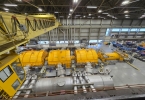
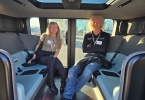
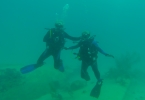

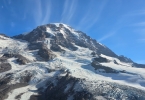
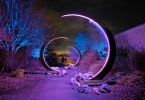
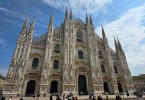
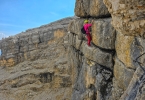
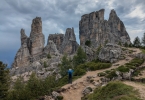
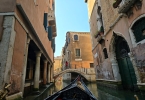

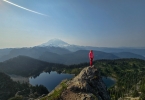
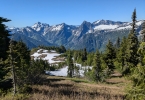
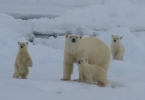

Hi from Greece on a sailboat, great site and a ton of info. I am looking at a 52 again after i toured her in 2015 and we are ready to change but honestly there are still some doubts. I still have the feeling that the hull, even if beeing quite tall and the design is superb, but the installation, plumbing can make life complicated. I know from dutch boats that they put all technical equipment from engine to aircon, heater, inverter water maker in one big engine room.,Looks overwhelming but you see problems easily. In the 52 it seems its placed all over the boat, in cabinets, under beds etc which make things not easier. Additional when boats get older parts have to be exchanged or some material like brass in aircon manifold or wrong gasket in tanks or cooler will show up after 10 years only and out of guarantee. So how to you see NH ageing over time and how often did you yell f****** why its so difficult to reach things…..,In the end the small bits can make it difficult. I have a oneoff with 90 pct superb installation but the last 10 pct drives you crazy…,,.Carsten
Many Nordhavns including the 52 look high and I’ve heard many observers concerned about the stability of the vessel but, what you don’t see, is the 6’7″ (on Dirona) of below-the-waterline weight. Dirona has over 6,000 lbs of ballast, up to 1,750 gallons (more 10,000 lbs) of fuel,as much as 400 gallons (3,200 lbs) of water, and an incredibly thick and heavy hull. There are downsides of all this mass including slightly lower fuel economy but it allows the boat to be incredibly stable in even very rough seas and to carry a lot of above the waterline space. The N52 is designed to pass Class A Ocean (highest rating). More data here: https://mvdirona.com/2019/03/deck-fuel-and-vessel-stability/
The short form is these boats are built tough and crazy heavy but, the more difficult the weather, the happier we were in that boat.
On service space, just about no boast is as big as you might like when servicing but Nordhavn’s are all serviceable. I did just about all service on our N5263 over the 10 years and more than 12,000 hours we owned the boat and I know it very well. I’ve also helped other Nordhavn owners over the years and I’ll admit that a N68 is much easier to work on than a N52. Smaller boats are almost always more challenging to service than large boats but the work can be done.
There were numerous times when more service space would have been really nice but Nordhavns of all sizes have been designed to be services and, in my opinion, the brand is above average by that measure. If you flip through the blog, you can get a rough perspective on how much service is required when a boat is used heavily with high annual hours and it’ll also give you good read on how accessible components are on the 52.
Dear James and Jennifer. Funny coincidence — I’ve been scouting for a good travel charger, and I just noticed in your photo (at the Granville Island Hotel) you’ve got one that looks like it could charge two laptops at once. What model is that? Looks like exactly what I need.
It’s a great charger and it can run two laptops at once if they are modern and fairly efficient. The max power delivery from this unit is 100W. It works perfectly for our two 13″ HP Dragonfly G4s. This is the Anker Prime 100W: https://www.amazon.com/dp/B0CZ6LXL8R.
Wow, I actually bought that one just last week—but I was a bit worried it might only offer slightly more power than my 65W ThinkPad charger.
By the way, do you usually rely on having power sockets available when you travel, or do you also carry a power bank for your laptop?
I was looking into this Anker model (A1340, ASIN B0BYP2F3SG) for that reason:
https://a.co/d/aMlud75
We also use this power bank that can drive a full 65W on demand: https://www.amazon.com/dp/B0DBHC9F8B.
I have liked your website for a long time. The content, layout, and especially the live and interactive map is fantastic. Can you give a bit of insight on how difficult this was to create and manage? Could a mid-level-technical (no computer programming) person manage/update this site? I am interested to have something similar but I am quite intimidated. Thanks ahead for any insights or recomendations.
A simple WordPress site is easy to setup and maintain. Other than the interactive map, that’s all our site is. You could easily do it. The map is a lot of custom code and would take time but the rest is easy for non-programmers. My recommendation is to dive in and chose a WordPress theme and bring up a site. Try changing themes as you learn more. Have book on WordPress to consult when you are stuck. It’s all easy and no programming expereince is needed.
Thanks for your quick response. It does seem like a basic site based on one of their templates shouldn’t be too hard. That is about my technical level. I was hoping you had an easy secret…. Thanks for sharing your adventures. I am super impressed that you have been to both poles. Happy travels.
When are you heading to outer space?? I am sure you have looked into it. It is about the only place left!
Yes, your right. If we could afford it, we would definitely do an orbit of earth.
Have you shared any details about your custom raspberry pi watch commander replacement anywhere? I searched the site and did not find anything beyond the initial mention. Thanks!
The details on what the watch commander does and how it behaves are described here: https://mvdirona.com/2022/03/watchkeeping-revisited/.
The software is fairly simple. It’s just a timer driving a set of 5v digital outputs each of which drives a relay and the relays control power to warning lights and/or alarms. It also has one digital input that senses when the user presses the switch confirming the operator is alert and another digital input that is used to activate/deactivate the device.
A recent post in the Puget sound boating Facebook group says that Cruising the Secret Coast is sold out everywhere and is in demand.
It’s true, The Secret Coast is no longer in print. We would prefer to see it in market and easily available to those that want it but the publisher didn’t see sufficient demand to justify an additional print run. For us, we’ve never cared about revenue from the book — we just want it widely available to those cruising the area.
We’ll follow up with the current publishing rights holder that doesn’t plan to further monetize the book and request republishing rights.
Just checking on you two, I recently viewed several video’s , I was always impressed with your skills, and confidence in motoring around the world. Hope you two are healthy and enjoying life.
All good on our end. I’ve been in a role at work where being in Seattle is much more effective so I’ve been working in that model for the last three years. We’re still adventuring though having been to the North Pole, the South Pole, other parts of Antarctica, Greenland, Iceland, Switzerland, Italy, and others.
Hello there!
Today I have discovered your blog by pure luck and I am litteraly impressed of how good you are in balacing hyper techincal work and enjoying life. Right now, I am spending hours reading around your blog. And I truly admire you.
I have spent the last 17 years pushing hard my limits… Improving both technical and soft skills… Reaching whatever I set as career goal… (e.g. now I am Director of a Cybersecurity Lab. I do exactly what I wanted to do. Hacking, Researching, etc.) But at the cost that my wife cannot withstand me anymore… and soon will leave with together with the kids.
Logically speaking, I can’t blame her. Job was always my first priority.
As a person that reached that level of expertize at work… but in the meantime still enjoying family and life… what advice would you give?
Shall I keep push further my limits to reach yet another career goal?
Shall I slow-down and enojy more life, knowing that the rest of the world won’t wait for me and will keep going & advancing… meanwhile… me… if I slow down I will just be left behind (form a technical skillset POV)?!
P.S. Apologies for this rant. I have not even close friend left to talk with.
Dear Jennifer and James,
Given your extensive experience with cruising, even if not specifically with sailing yachts, I wanted to get your thoughts on the tragic sinking of the Bayesian in Italy on August 13th at 4:30 AM.
How could a 56-meter (183 ft) sailing yacht collapse in under a minute while anchored just half a mile off the coast of Porticello, Palermo (Sicily, southern Italy)? (I’ve included a video that appears to capture the sinking.)
The Bayesian had a 75-meter (246 ft) mast—making it 34% taller than the yacht is long. Could this have been a balance issue, or is that too simplistic an explanation?
Investigations have revealed that the mast remained intact; it didn’t snap. Is it possible that wind alone caused the sinking? Gusts in the area were estimated to be around 50 knots, possibly reaching 70 knots at the incident site.
I’ve often heard the saying, “the sea knows everything you did wrong,” and I greatly value your analytical approach to incidents like these, especially in identifying potential causes to avoid similar tragedies in the future.
The captain, James Cutfield, was reportedly very experienced—a 51-year-old from New Zealand.
It’s a heartbreaking loss for the families involved.
complete analysis by BBC: https://www.bbc.com/news/articles/cy0nwe4d7k5o
video of sinking: https://www.ilsole24ore.com/art/naufragio-palermo-riprese-ricerche-dispersi-speleosub-nuovo-azione-AFjQ9UTD
Its definitely a tragic situation. Small to medium sized recreational craft generally don’t have water tight compartments and, for those boats that do have them, they only help if closed. Without watertight compartments, bulk water ingress if it occurs will sink a boat amazingly quickly.
The mast is tall but relatively low mass relative to the keel, hull, and machinery in a well designed sail boat. Where the mast will certainly have contributed to the problem is the wind pressure on the mast will blow the boat over unusually far and higher winds will blow over to greater angles. If the boat had open toy garages, windows, or doors, as the boat inclines over unusually far, it can take on water quickly. Even if the boat was sealed up, there is an inclined beyond which the boat will suffer water ingress as engine room intakes and other openings allow water to rush in. In our boat, this angle was 61 degrees. Beyond this angle, the boat would take on water.
I expect we’ll learn that the boat was blown over unusually far for at anchor conditions and suffered rapid water ingress and this sunk the boat.
A question I have is that in all of your cruising did you ever encounter any unusually wild weather conditions or hear other cruisers mention something like this?
We have never in weather that would be classified as wild but we have been in sustained 40 knot winds with well developed seas (around 20′) 3 or 4 times and don’t love it but the good news is it didn’t feel unsafe. We have never seen roque waves or truly dangerous weather. We know that our boat and us are fairly comfortable in 20′ seas but we don’t really know the limit having never seen worse. But, I suspect that double what we have seen, which definitely does happen, would be high risk and fairly uncomfortable.
Another question I’m curious about is that in all of your cruising, and land travels outside the US how accurate did you find the forecasts issued by local weather offices?? Were there countries more accurate than others?
When we are offshore we show the ECMWF, PWG, PWE, Spire, WWW3, and GFS models through PredictWind. The ECMWF model is our primary go to model but, when we see great variation with the others, we dig deeper and use more caution. We’re generally impressed with both PredictWind and the accuracy of these weather models when off shore. Near shore, we find local weather forecasting from the host country more accurate and more detailed than the models. There are definite differences in the accuracy of the local forecasts depending upon how much the host country invests in weather forecasting and whether the prevailing wind patterns were over land where there is lots of information or over water where there is less.
Good-morning James and Jennifer,
My husband and I are currently anchored in “the Wizard” after two nights in Echo Bay off Stryker Island. Both of these anchorages we chose because of your book “Cruising the Secret Coast” and we couldn’t be more thrilled. We have had our boat “Slow Dance” (a Kadey Korean Whaleback) for four years now but this is our first season North of Cape Caution. We are so grateful for your book and that you so generously shared these beautiful anchorages with other boaters. Thank you. Best regards and good luck with your ongoing travels and adventures. Edan and Andrea Oestreich
That’s kind of you to take the time to pass on the feedback on “Cruising the Secret Coast”. Thanks and happy cruising.
Hi James and Jennifer
Fist of thank you for this great blog. It has certainly inspired me to remember to be adventurous with my travels and get better at documenting where I go and what I see.
On that note, I very much like how you display all your GPS tracks and photos on google earth, make me want to do the same thing. What do you tend to use for GPS tracking for your flights, hikes and trips.
A small Garmin perhaps? I’d be curious to know, I have trip to multiple destinations in Asia coming up and would like to collect GPS tracks while flying, sailing, driving and walking :)
On another note I hope you enjoyed your trip to Greenland via Iceland.
I’m actually from Iceland although I live in London and spend a lot of time in the US for work, in Jersey City at the moment. So anyway if you ever go to Iceland again and want to explore perhaps more off the beaten path I can give some pointers and ideas.
All the best
Arni,
Thanks for the feedback on the blog, and for the offer of Iceland tips. We’ll certainly return so will take you up on that when we plan our next trip.
For most tracks we use the Android Geo Tracker app (https://play.google.com/store/search?q=geo%20tracker&c=apps) on our phones. This works well except on ships, planes, and rail where the signal is often blocked. To handle the ships case we hang a Garmin inReach Mini 2 (https://www.amazon.com/gp/product/B09PSSSFPF) outside on a balcony rail so it gets a clear signal. For planes and rail, where putting the tracker outside isn’t practical, we just use the InReach inside since it has a better antenna than the phone and it does somewhat better.
Jennifer
Thanks for the information on how you do GPS tracking, the Garmin inReach Mini 2 sounds like a good option, I had been looking at it and the way you use it make sense, I’ll get one for my next trip.
Yeah feel free to drop me an email any time you might be thinking about planning a trip to Iceland, I can certainly share some ideas for interesting places to see there, etc.
There are plenty of places that are well off the beaten track that are interesting to visit.
Perhaps your next trip there might be to see the 2026 total solar eclipse that will be best visible from the tip of the Vestfjords.
https://en.wikipedia.org/wiki/Solar_eclipse_of_August_12,_2026
Arni
Hello James and Jennifer,
We are planning a trip down the Columbia River. I know you did this back in 2012 and I have a couple of questions about the trip.
1. Do you have a recommended guide for the extended Columbia/Snake Rivers?
2. Why didn’t you travel farther up the Columbia River to Wenatchee, the Grand Coulee Dam, or beyond? Does the river get too shallow?
3. Any tips or warnings for the trip? Favorite moorages or restaurants?
I guess I should say UP the Columbia River…
Griff,
1. The two guides we used were “Umbrella Guide to Exploring the Columbia-Snake River Inland Waterway” (https://www.amazon.com/gp/product/0945397585/) and “Boating Guide to the Lower Columbia and Willammette Rivers” (https://columbiariversailing.org/boating-guide-to-the-lower-columbia-and-willamette-rivers/). The first isn’t specific to boating, but gave lots of good information on what to see and do.
2. Beyond Hanford, our charts didn’t have any soundings. We stopped at the confluence with the Snake and ran the tender up the Columbia to check out Hanford
3. Our best tip is to go outside the summer locking schedule for recreational craft to give you more flexibility on when to lock through. See https://mvdirona.com/category/destinations/north-america-pacific-coast/columbia-river for a detailed description of where we went, what we did, and our impressions.
Enjoy your time on the river system—it’s a fabulous adventure!
Jennifer
Hello, james:
I’ve been following your blog for a long time and I love it.
Thank you very much for your continued sharing about the data center.
For the frequent power and cooling failures of Google and Azure in the past two years, AWS has not happened for a long time. What is the secret or improvement?
The sad reality of really focusing on operational excellence is that outages are always noticed but avoiding them seldom is. Thanks for the feedback.
Our approach is to go with simple approaches to design redundancy and then years of honing operational practices where every event where systems or the team performed short of perfect gets analyzed deeply. It’s amazing what can be learned from even very minor operational or system glitches.
Dear James,
Thank you so much for continuing to share such important content.
As you say, “Outages are always noticed but avoiding them seldom is.”
Power and cooling failures in data centers have been the source of Scale failures.
Reducing or even eliminating these Scale failures through design redundancy of infrastructure or design redundancy of services is certainly good news for the data center.
I sincerely hope that an innovative architecture can be found to support this goal.
We have good sized teams on both the hardware infrastructure side and the systems software and applications side focused on resilience and availability. We constantly tune operational processes and design choices to deliver stable systems that just about never skip a beat. We all appreciate your feedback.
In you picture of Langley Harbor – what classic old cruiser is it passing south to north in the upper right?
Good to hear from you John. Unfortunately don’t have a good enough resolution photo to determine the name of that vessel. We had a great weekend in Langley–it’s been ages since we visited and staying on shore rather than anchored off as we used to gave us a different perspective.
— Jennifer
Thanks for continuing to take us on your journeys. Thought of you today when N92 Warbird pulled into our anchorage at Cambridge Cay, Exuma, Bahamas. Do you still have plans to do the loop someday?
Thanks for the feedback on the blog. Yes, we would like to do the Great Loop sometime but don’t have immediate plans.
Dear James,
I’ve noticed that no matter where you go, you always have your trusty Sonos Roam with you. I remember you wrote a thorough review about it a while back. You mention that it can also function as an Echo/Alexa speaker, even without the physical Echo device. I assume it works as a Bluetooth speaker for your Alexa phone app but I’m a bit confused because you mentioned not using the Bluetooth feature. Does that mean it connects directly to the Alexa service on the internet itself?
By the way, do you have a Spotify playlist? What kind of music do you usually listen to while traveling, just background tunes, or do you have specific songs or artists you prefer?
Ciao !
Raffaele,
The Sonos Roam supports the Alexa service and can operate just like an Echo device. For music, we listen to the same thing at home or away, mostly modern rock. Some of the bands we like now are The Fumes, The Brew and Henry’s Funeral Shoe. We’re listening to The Fumes right now over the Sonos Roam while in Belgrade, Serbia on a Danube River cruise.
Jennifer
Hi James and Jennifer,
Long time follower, and love your blog. Thank you so much for continuing to share such interesting and consistent content!
I think the boat you posted in your recent Puget Sound crossing is actually a Wellcraft 355, not an Axopar. They look very similar although the Wellcraft is a bit beamier and slightly higher freeboard.
See here: https://www.wellcraft.com/us/boat/wellcraft-355
Cheers, and thanks again for providing such an interesting blog of your adventures!
Jake,
Thanks for pointing that out—we’ve updated the text. The Wellcraft looks like an interesting boat—we’ve not come across it before.
Jennifer
In reference to the Aldebrook resort.
Say hello to Bill !
You might be next to where Bill Gates famously spent his notable “think weeks” and I believe I spotted this spot featured of the Netflix documentary “Inside Bill’s Brain” at S1:E2 min 02:45. You should take a look ! (By the way, fantastic documentary!)
Alderbrook has had many big visits and special visitors over the years and it’s perfectly believable that Bill Gates would have done a Think Week or two there. They definitely have a relaxing environment ideal for detailed thought.
Hi, I was hoping you could cast some light on traveling with a pet:)
My family and our dog will sail to French Polynesia on a very similar route to yours on a pleasure boat leaving our homeport San Francisco mid July.
1. We will depart from California – Hawaii with all the necessary International health certificates.
2. Sail via Kiribati: I battle to get information regarding what is required to disembark and where we could do so; I read that you did it but have failed to make contact with anyone.
3. I believe I must complete the 211 A form to enter the French Polynesia 4. Our first port of arrival will be The Marquesas Islands; if we were to first go to Tahiti, which seems to be required for the vet check, we would miss the Marquesas and be out at sea much, much longer:(
5. Do you know of any way around this? Any DBS on the Marquesas Islands or veterinarians that can stamp our dog’s health certificate? I appreciate your taking the time to assist me in these matters and make our family visit successful. Yours Sincerely, Karin Hoole
Karin,
You’ve got a fabulous adventure ahead of you!
Cats are a little easier than dogs as they don’t need to go ashore, so can be confined on board and thus not formally imported. We didn’t import our cat into Kiribati or French Polynesia.
For information on Kiribati, I started with the Kiribati Tourism Office: https://www.kiribatitourism.gov.ki/.
For French Polynesia, we used Kevin Ellis of Yacht Services Nuku Hiva and recommend him for clearing through. He should be able to provide more information on the current formalities for pets: https://www.yachtservicesnukuhiva.com
Noonsite.com also might have some helpful information on both these topics.
Have a safe and wonderful trip!
Jennifer
Thank you, Jennifer, we are excited!
Hello James & Jennifer;
I was doing a bit of family history research, which included a quick google search for one of the location of a resettled community on the south coast of Newfoundland, namely “Sam Hitches” when I stumbled across part of your log showing your voyage to this area of the world.
It is certainly a rugged coast and your pictures and comments captured it very nicely. I was intrigued and so I followed your trail along the coast which included your stop in Hr. Breton where you landed not more than a 50 meters from my home in the inner harbour. I also followed your trek across the ocean and dropped in to visit a few of the other locations that you have visited.
This contact is only intended to comment on my sense of envy/joy/awe about your journeys and I want to wish both of you safe travels for the future. I have added your site on my bookmark list & look forward to taking another trip with you.
Cliff
You definitely grew up in a beautiful part of the world. We really enjoyed our time there. Thanks for the blog feedback.
Hello James and Jennifer
This is Stuart from N6052, currently located at Fairlie Quay in Scotland hauled out .
First of all, when I looked at your site for the first time in moths, I was so sorry to hear about the loss of your lovely Spitfire. Liz and I also lost our 14 year old Golden Retriever Sadie just after we flew the dogs back to Canada in October. We can all take some solace in the fact that Spitfire and Sadie BOTH lived very long happy lives BUT losing them is still so heartbreaking. We have added a new puppy to the clan as we and our older male Golden were all feeling like there was a large hole in our lives and our daughter agreed to take on the puppy should she outlive us.
Otherwise, we hope that you are enjoying life ashore and wonder if you have any plans for another boat in the future.
I wanted to ask for some advice on managing our double stacked Fernstrum keel cooler as I am planning to paint mine as you did yours.
Sitting in the water, primarily at Kip Marina, for the past two years, the cooler had acquired a lot of hard white worm casts and mussels on the tubes as well as worms and barnacles on the box ends. Pressure washing and a hard plastic Lee Valley scraper have removed the bulk of the growth but the cooler is not yet suitable for painting. Dropping it for cleaning or salt blasting in situ seem to be the current options. Our coolant system is due for a flushing and coolant change in either case .
We are having our hull blasted with a material that is harder than soda and more like a salt according to Marineblast. We are doing this as the antifouling placed in Spain or the Bahamas by the former owner was likely incompatible with a red Pettit undercoat according to Steve D, who surveyed the boat for us. Delamination of the antifouling was evident but minor at survey in 2019 and although it has progressed somewhat since then, growth on the antifouling was remarkably minor.
I was thinking that I need to drop the cooler to allow full cleaning and painting of the cooler and to allow blasting and painting of the hull behind the cooler. Spraying paint is not allowed in Scottish marinas as you likely know from your time in Stornoway.
Did you routinely drop the keel cooler for cleaning and painting? I noticed that in one photo from Stornoway that the painters were cleaning the cooler in situ. How did they do that? Another photo from your stay at Saxon Wharf shows an extremely clean keel cooler and it would help to know how that was accomplished.
Although I was thinking of gently salt blasting the cooler, wedo have the option of taking it to Serck, which is a commercial facility in Glasgow, for chemical cleaning. Our mechanic also works at the defunct Hunterston nuclear power facility and has a lot of experience of sending larger cooler grids to Serck for cleaning
Any advice would be greatly appreciated
All the best
Stuart
Thanks kind words on Spitfire and, yes, there are days when we would love to be back boating. But, in my current work role, it’s really not efficient to be away for weeks at a time so boating doesn’t really fit very well right now. The good news is I’m having fun with work and we’re still managing to squeeze in enough travel to be enjoying ourselves. But, we fully expect to return to boating — it’s hard to match the personal freedom that comes with exploring by boat.
For keel cooler maintenance, it’s a lot of work to get the cooler down. Doing so forces you to remove the engine coolant, take off both cooler hoses (heavy difficult to remove hoses), and the remove the four fasteners holding the cooler in place. It’s fairly heavy and, each time it goes back on, care needs to be taken to avoid coolant or seawater leaks. Done properly it’s rarely a problem but we generally never drop the cooler unless it needs to be replaced or serviced.
We clean the cooler with a metal scraper followed by rotary drill powered wire brush and/or sandpaper. If you paint the cooler, cleaning it is far easier. The only downside is nearly everyone that sees it will warn you that “keel coolers should not be painted” and “paint will prevent proper cooling.” Both are technically true but the negative impact of paint isn’t huge and, at least in our limited tests, a painted cooler is more effective than an cooler covered in growth. We would do it again.
We have never sand blasted a keel cooler but abrasives are fine as long as they aren’t too aggressive.